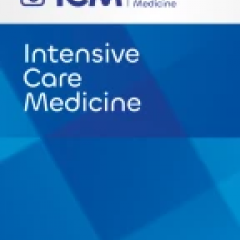In collaboration with Flinders University and Alice Springs Hospital, UQ researchers have completed an important study that identified novel antibiotic dosing strategies for Indigenous Australian patients requiring haemodialysis.
Kidney disease is highly prevalent in Indigenous populations across the world and is often associated with socioeconomic disadvantages and a high chronic disease burden. A disproportionately high number of Indigenous Australians have end stage kidney disease and require ongoing haemodialysis to support kidney function. Unfortunately, these patients have high rates of hospitalisation due to infection, commonly requiring antibiotic therapy.
Ceftriaxone is an intravenous antibiotic commonly used in severe infections with a once-a-day intravenous dosing regimen prescribed and administered via a cannula (a thin tube inserted into a vein). However, the insertion of a cannulate inflicts trauma on the vein, and risks long term damage which jeopardizes its use for future vascular access needs.
The research team, led by Dr Suzanne Parker and Dr Danny Tsai, conducted a study which investigated the suitability of a three-times-weekly post-haemodialysis dosing regimen in a group of infected Indigenous Australian patients requiring haemodialysis in a remote dialysis centre.
Dr Suzanne Parker says, “the aim of this study was to investigate alternative ways of treating Indigenous Australian patients on haemodialysis, with the goal of providing improved long-term care.”
The study found that dosing patients three-times weekly after dialysis was suitable for optimal bacterial killing, minimised drug toxicity and prevented vein trauma from repeated cannulation which is required with daily treatment.
“Three-times weekly dosing minimises cannulation needs associated with once daily dosing and preserves the longevity of life-saving veins required for future vascular access formation,” said Dr Danny Tsai
The team also found a strong relationship between liver damage and risk of ceftriaxone toxicity in this patient population.
In addition, the study demonstrated that ceftriaxone is removed from the patient’s blood stream during haemodialysis. This has not been previously described in the literature and will increase the patient’s risk of treatment failure and the potential emergence of antimicrobial resistant pathogens. Hence, the authors recommend against the common practice of administering ceftriaxone during the dialysis session.
When compared with conventional daily dosing regimens, a three-times weekly dosing strategy achieves effective antibiotic concentrations and exposures associated with a minimal likelihood of drug toxicity and preserves the longevity of veins required for future vascular access.
“Based on the properties and characteristics of ceftriaxone, interethnic pharmacokinetic differences are unlikely for this antibiotic and hence, results from this study can be justifiably applied to patients of other ethnic origins”, said Dr Danny Tsai.
We would like to acknowledge our collaborators on this study: Flinders Health and Medical Research Institute, Alice Springs Hospital, Alfred Health, the Peter Doherty Institute for Infection and Immunity, the Royal Darwin Hospital and the Royal Brisbane and Women’s Hospital.



